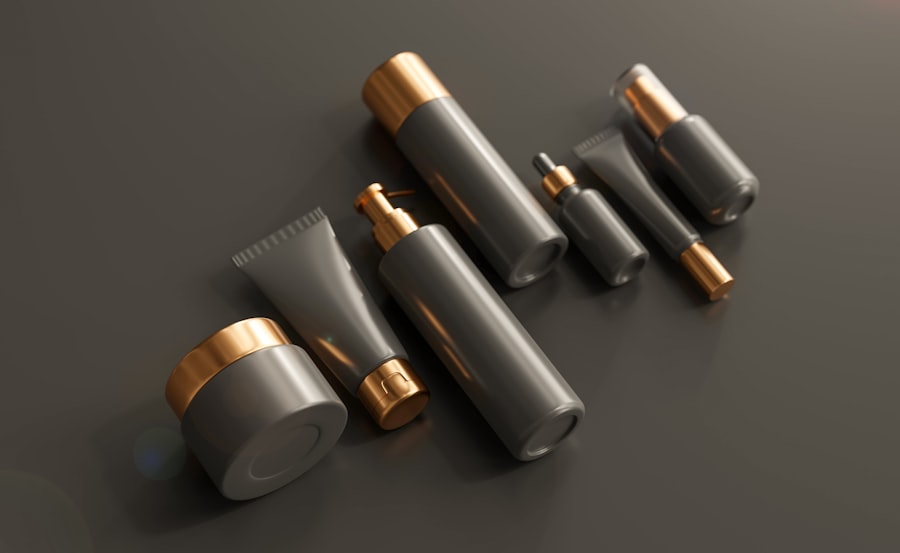When you undergo laser hair removal, it’s essential to grasp the shedding process that follows. This phase is a natural part of the hair removal journey and can often catch individuals off guard. After the laser treatment, the hair follicles are damaged, which leads to the hair shafts being pushed out of the skin.
This process is known as shedding, and it typically occurs within a few weeks post-treatment. You might notice that the hair appears to be growing back initially, but this is merely the result of the hair being expelled from the follicle rather than new growth. Understanding this process can help you manage your expectations and alleviate any concerns you may have.
It’s important to remember that shedding is a sign that the treatment is working effectively. The laser targets the pigment in the hair follicles, and as they are destroyed, the hair will eventually fall out. This phase can vary in duration and intensity from person to person, depending on factors such as hair type, skin type, and the area being treated.
By familiarizing yourself with what to expect during this time, you can approach your post-treatment experience with confidence.
Key Takeaways
- Shedding after laser hair removal is a natural part of the process as the treated hair falls out.
- To manage shedding, exfoliate regularly and moisturize the skin to help the shedding process along.
- Shedding occurs as the treated hair follicles are pushed out of the skin, making way for new hair growth.
- Shedding typically lasts for 1-3 weeks after laser hair removal treatment.
- Common misconceptions about shedding include the idea that it means the treatment didn’t work, when in fact it’s a sign of successful hair removal.
Tips for Managing Shedding After Laser Hair Removal
Managing shedding after laser hair removal can be a bit tricky, but there are several strategies you can employ to make the process smoother. First and foremost, resist the urge to pick or pull at the shedding hairs. While it may be tempting to help the process along, doing so can irritate your skin and lead to potential complications such as ingrown hairs or infections.
Instead, allow the hairs to fall out naturally over time. This patience will pay off in ensuring your skin remains healthy and free from unnecessary irritation. Another effective tip is to keep your skin moisturized during this period.
Using a gentle, hydrating lotion can help soothe any discomfort associated with shedding. Look for products that contain calming ingredients like aloe vera or chamomile, which can provide relief and promote healing. Additionally, consider wearing loose-fitting clothing over the treated area to minimize friction and irritation.
This simple adjustment can make a significant difference in your comfort level as your skin goes through this transitional phase.
The Science Behind Laser Hair Removal Shedding
To fully appreciate the shedding process after laser hair removal, it’s beneficial to delve into the science behind it. Laser hair removal works by emitting concentrated light energy that targets melanin in the hair follicles. This energy is absorbed by the pigment, which heats up and ultimately destroys the follicle’s ability to grow hair.
As a result, the hair enters a state of dormancy, leading to its eventual shedding from the skin’s surface. The shedding phase is influenced by the hair growth cycle, which consists of three main stages: anagen (growth), catagen (transitional), and telogen (resting). Laser treatments are most effective during the anagen phase when hair is actively growing.
After treatment, hairs that were in this active growth stage will begin to shed as they are expelled from their follicles. Understanding this scientific background not only demystifies the shedding process but also reinforces the effectiveness of laser hair removal as a long-term solution for unwanted hair.
How Long Does Shedding Last After Laser Hair Removal?
| Time Frame | Shedding Duration |
|---|---|
| Immediately After Treatment | 1-3 weeks |
| Peak Shedding Period | 2 weeks after treatment |
| Complete Shedding | 3-4 weeks after treatment |
The duration of shedding after laser hair removal can vary significantly from person to person. Generally, you can expect the shedding process to last anywhere from one to three weeks following your treatment session. During this time, you may notice that some areas shed more quickly than others, which is entirely normal.
Factors such as hair thickness, color, and individual skin characteristics all play a role in how long shedding lasts. It’s also important to note that multiple sessions of laser hair removal are typically required for optimal results. As you progress through your treatment plan, you may find that subsequent sessions lead to less noticeable shedding over time.
This is because fewer active hair follicles remain after each treatment, resulting in a more efficient and effective hair removal process. By keeping track of your shedding timeline after each session, you can better understand your body’s response and adjust your expectations accordingly.
Common Misconceptions About Shedding After Laser Hair Removal
There are several misconceptions surrounding shedding after laser hair removal that can lead to confusion or concern. One common myth is that shedding indicates that the treatment has failed or that hair is regrowing. In reality, shedding is a positive sign that the laser has effectively targeted and damaged the hair follicles.
It’s crucial to differentiate between shedding and regrowth; while shedding involves existing hairs falling out, regrowth refers to new hairs emerging from healthy follicles.
In truth, because of the varying growth cycles of different hairs on your body, you may experience staggered shedding over several weeks.
Some areas may appear to shed more quickly than others due to differences in hair density and growth patterns. By understanding these misconceptions, you can approach your post-treatment experience with a clearer perspective and avoid unnecessary worry.
Products to Help Alleviate Shedding Discomfort

To ease any discomfort associated with shedding after laser hair removal, consider incorporating specific products into your skincare routine. Look for gentle exfoliants that can help remove dead skin cells and prevent ingrown hairs from forming as hairs shed. Products containing salicylic acid or glycolic acid can be particularly effective in promoting cell turnover without being overly harsh on your skin.
In addition to exfoliants, soothing creams or gels can provide relief during this phase. Products infused with ingredients like tea tree oil or witch hazel can help calm inflammation and reduce redness in the treated area. Always opt for fragrance-free options to minimize irritation and ensure your skin remains comfortable throughout the shedding process.
By selecting appropriate products, you can enhance your overall experience and support your skin’s healing journey.
How to Care for Your Skin During the Shedding Phase
Caring for your skin during the shedding phase is crucial for maintaining its health and appearance. First and foremost, keep your skin clean by using a mild cleanser that won’t strip away natural oils or irritate sensitive areas. Avoid hot showers or baths immediately after treatment, as heat can exacerbate any discomfort or redness you may experience during shedding.
Hydration is key during this time; ensure you’re drinking plenty of water to keep your skin hydrated from within. Additionally, applying a gentle moisturizer regularly will help maintain your skin’s barrier function and prevent dryness or flakiness as hairs shed. If you notice any signs of irritation or discomfort beyond what you consider normal, don’t hesitate to reach out to your skincare professional for advice tailored to your specific situation.
What to Expect After Shedding Stops
Once the shedding phase concludes, you’ll likely notice a significant reduction in unwanted hair in the treated area. This is one of the most rewarding aspects of laser hair removal; many individuals find that their skin feels smoother and more refined after this process. However, it’s essential to remember that while shedding marks a successful step in your journey, it doesn’t mean that all hair will be permanently removed after just one session.
You may still have some fine or light hairs remaining that were not effectively targeted during treatment due to being in different growth cycles. Regular follow-up sessions will help address these remaining hairs and ensure long-lasting results. As you move forward post-shedding, continue practicing good skincare habits and maintain communication with your laser technician about any concerns or questions you may have regarding future treatments.
By employing effective strategies for care and addressing common misconceptions, you can navigate this phase with confidence and ease. With patience and proper skincare practices, you’ll soon enjoy the benefits of smoother skin and reduced hair growth as you continue on your journey toward achieving your desired results.
If you’re looking to speed up the shedding process after laser hair removal, you may want to check out this article on fashion and beauty tips helpful in maintaining your skin post-treatment and ensuring long-lasting results.
FAQs
What is laser hair removal shedding?
Laser hair removal shedding refers to the process where treated hair falls out after a laser hair removal session. This shedding is a natural part of the hair removal process and indicates that the treatment is working.
How long does it take for shedding to occur after laser hair removal?
Shedding typically occurs within 1 to 3 weeks after a laser hair removal session. The exact timing can vary depending on the individual’s hair growth cycle and the specific area being treated.
Can anything be done to speed up the shedding process after laser hair removal?
While shedding is a natural process that cannot be rushed, there are some steps that can potentially help speed up the shedding process. These include gently exfoliating the treated area and avoiding any activities that may cause excessive pulling or tugging on the hair.
Is it normal for some hairs to not shed after laser hair removal?
It is normal for some hairs to not shed immediately after a laser hair removal session. These hairs may require additional treatments to effectively remove them. It is important to follow up with the recommended number of treatment sessions to achieve the best results.
Are there any risks associated with trying to speed up the shedding process after laser hair removal?
Attempting to speed up the shedding process should be done with caution to avoid causing irritation or damage to the skin. It is important to follow the aftercare instructions provided by the laser hair removal technician to minimize any potential risks.






